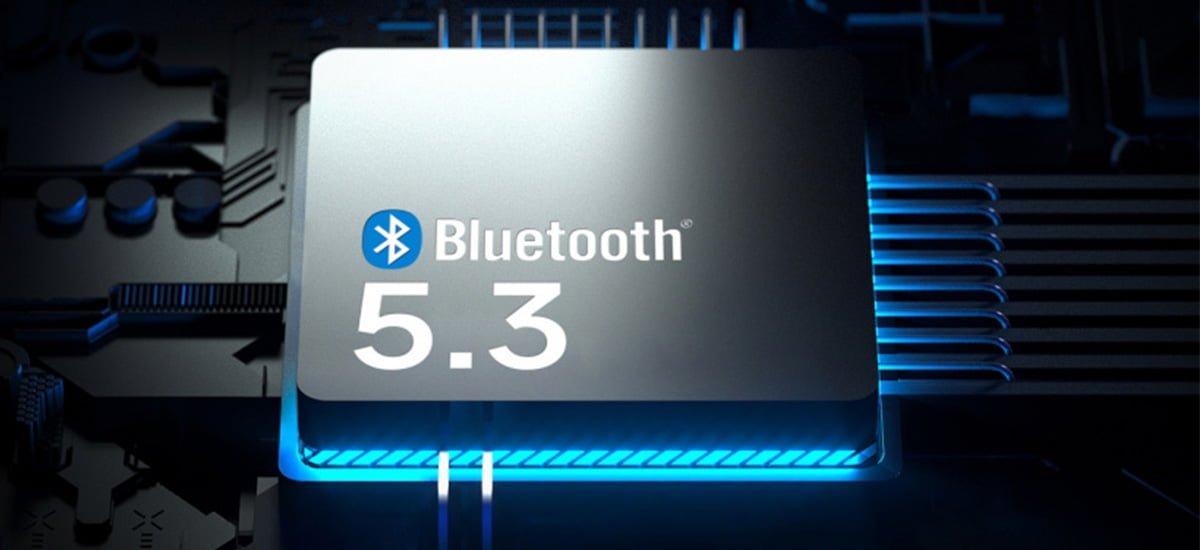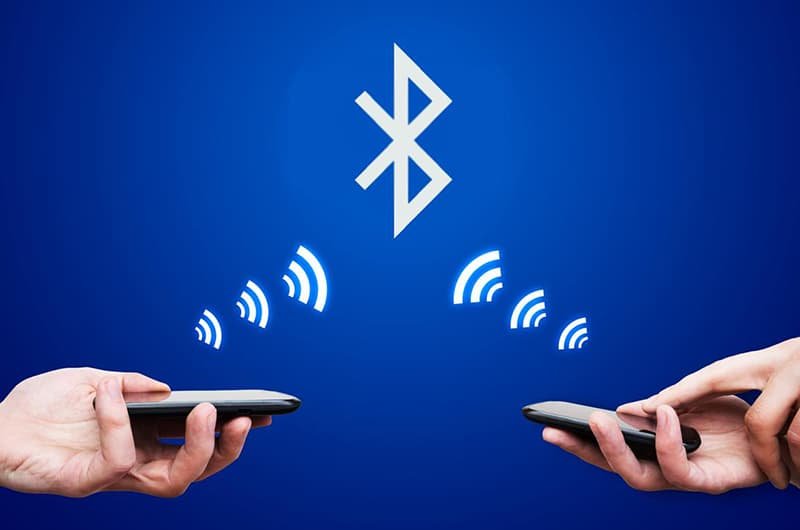Bluetooth 5.3 is the most recent version in the Bluetooth 5.x family, officially published in mid-2021 and starting to appear in devices from 2022 onward. While it doesn’t change the fundamentals of how Bluetooth works, it brings a few focused improvements that make the connection between devices more stable, more efficient, and slightly more intelligent.
If you’ve used Bluetooth in the past — for connecting wireless earbuds, a speaker, a keyboard, or even a gaming controller — you know how convenient it is. But you also know it isn’t perfect. Connections can drop. Audio can stutter. Battery drains faster than expected. Bluetooth 5.3 was created to deal with exactly those kinds of problems.
What makes Bluetooth 5.3 different isn’t that it’s dramatically faster or has double the range. In fact, it has the same theoretical range and speed as Bluetooth 5.0, with up to 240 meters in ideal open-air conditions and a maximum data rate of 2 Mbps. What changes is how devices manage that connection in real time. Bluetooth 5.3 focuses on background improvements — things you won’t see on the box, but you’ll notice while using it.
Key Improvements in Bluetooth 5.3
The biggest upgrades in this version come down to how Bluetooth handles power, interference, and communication between devices.
One of the most useful features is called Periodic Advertising Enhancement. In older versions of Bluetooth, devices like beacons or smartwatches would send the same message over and over just to make sure it was received. This led to unnecessary traffic and power waste. Bluetooth 5.3 solves this by letting receiving devices identify and ignore repeated messages, cutting down on redundant communication and improving battery life on both sides.

Another key feature is Connection Subrating. This allows Bluetooth devices to switch more quickly between low-power and high-performance modes depending on what they’re doing. So if your wireless earbuds are idle, they can save energy, but the moment a call comes in or music starts playing, they can respond without delay. For hearing aids and wearable devices, this change makes everyday use smoother and less power-hungry.
There’s also a new capability known as Channel Classification for peripherals. Previously, only the main device — like your phone or laptop — could scan and choose which Bluetooth channel to use. Now, smaller accessories like a mouse, headset, or transmitter can also evaluate channel quality and avoid interference. This makes the entire system more robust, especially in crowded wireless environments.
Lastly, Encryption Key Size Control has been added to improve security and efficiency. It allows devices to agree on encryption settings faster, with less back-and-forth negotiation, which reduces connection time and avoids unnecessary energy use.
Why These Features Matter
At first glance, these changes might sound small. But in daily use, they add up. A Bluetooth 5.3 connection tends to feel faster when pairing, more consistent during use, and easier on your battery. If you’ve ever had a headset randomly disconnect or a wireless keyboard go to sleep and not wake up immediately, 5.3’s improvements are designed to reduce those frustrations.
Importantly, Bluetooth 5.3 also keeps all the benefits introduced in earlier versions — including the LC3 audio codec and LE Audio support from Bluetooth 5.2 — while adding these new refinements on top. This means that if you’re using Bluetooth 5.3 earbuds, adapters, or speakers, you’re getting the best of everything the Bluetooth 5.x standard has to offer so far.
Real-World Use of Bluetooth 5.3: What It Actually Changes
Bluetooth 5.3 isn’t just about numbers on a spec sheet — it’s a set of improvements that affect how devices work in real-life situations. Today, you’ll find this version in many newer products without even realizing it, from headphones and wireless speakers to USB adapters and car transmitters.

When it comes to audio devices, the shift is most noticeable in stability and battery performance. Brands like Klipsch and TCL have released Bluetooth 5.3 speakers that maintain a stronger, more reliable connection even in busy environments. You don’t get sudden drops or stuttering, and devices tend to connect more quickly and stay paired. For earbuds and headsets, especially in the budget and mid-range category, the experience has also improved. The combination of Bluetooth 5.2’s LC3 audio codec and Bluetooth 5.3’s power optimizations means you get consistent audio quality with better energy efficiency.
Gaming headsets are also benefiting. Some models, like the wireless gaming headsets designed for PS5 or PC, now come with Bluetooth 5.3 support and deliver more responsive performance — something you’ll notice during voice chat or fast audio transitions. While it won’t eliminate latency entirely, it brings it down enough to improve the overall feel of wireless gaming.
You’ll also find Bluetooth 5.3 in many new USB adapters or transmitters, especially those using Realtek chipsets. For people using older laptops or desktops, these dongles allow access to modern Bluetooth features without changing the whole system. Windows 11 often supports these adapters out of the box, though many users still rely on downloading the correct Realtek Bluetooth 5.3 driver manually to unlock full functionality.
What’s helpful is that Bluetooth 5.3 is fully backwards compatible. That means you can still connect to devices that only support Bluetooth 5.0 or even older versions like 4.2. However, to take advantage of the new features — like better power management or interference handling — both connected devices must support 5.3. If only one does, the connection works, but it defaults to the lower version.
Understanding Range and Latency in Bluetooth 5.3
When people hear about a “new Bluetooth version,” they often assume it means longer range. Technically, Bluetooth 5.3 still uses the same radio range as Bluetooth 5.0 — up to 240 meters in perfect conditions — but in real-world usage, it typically performs better. It handles interference more intelligently, which means connections stay stable even in rooms with lots of wireless activity. This is especially noticeable in offices, public spaces, or homes with many Bluetooth and Wi-Fi devices running at once.

Latency is another area where Bluetooth 5.3 offers a slight improvement. Thanks to better switching between low and high power states, devices react faster when they need to stream audio or reconnect after sleep. The difference is small but noticeable, especially for users sensitive to audio delay, like those who use wireless earbuds for gaming, video calls, or voice assistants.
Driver Support and Compatibility: What You Need to Know
If you’re upgrading to a Bluetooth 5.3 adapter or dongle — especially for a PC — it’s important to have the correct driver. Most current USB adapters that advertise Bluetooth 5.3 are powered by Realtek chipsets. Some work immediately with Windows 11, but others require you to install a specific driver manually to get stable performance. This is especially important if you want to connect multiple devices or use low-energy Bluetooth accessories.

The good news is that Bluetooth 5.3 doesn’t break compatibility with older standards. You can use it with almost any Bluetooth device — but again, unless both ends of the connection support 5.3, you won’t get all the efficiency and stability benefits. This means that Bluetooth 5.3 is a smart upgrade path that still works with your existing gear.
Bluetooth 5.3 vs 5.4
While Bluetooth 5.3 focuses on improving everyday device communication — like lowering power usage, reducing interference, and making connections more responsive — Bluetooth 5.4 takes a different path. It introduces features aimed mostly at industrial and low-energy IoT devices, not at mainstream consumer products like headphones or smartphones.

One of the biggest additions in 5.4 is support for PAwR (Periodic Advertising with Responses), which allows sensors and low-power devices to communicate more efficiently in large networks. It also adds encrypted advertising, which improves privacy for passive Bluetooth devices. However, for users looking to improve audio quality, gaming performance, or everyday wireless connections, Bluetooth 5.3 remains the more relevant and widely supported version. In short, Bluetooth 5.4 is about scaling up Bluetooth in factories and smart environments — Bluetooth 5.3 is about making your headphones and adapters work better.
So, Is Bluetooth 5.3 a Meaningful Upgrade?
Yes, it is — just not in a flashy or dramatic way. Bluetooth 5.3 doesn’t bring new headline features like multi-device pairing or ultra-low latency, but it refines everything under the hood. Your headphones will drop out less often. Your wireless keyboard will stay paired longer without recharging. Your phone will waste less power keeping background connections alive. These are small changes, but together, they make Bluetooth more reliable and less annoying to use.
If you’re buying a new device and it supports Bluetooth 5.3, you’re getting a more stable and efficient version of the standard — one that fixes many of the minor frustrations users had with older versions. And if you’re building a PC or upgrading a laptop, choosing a Bluetooth 5.3 adapter will future-proof your setup for the next few years.